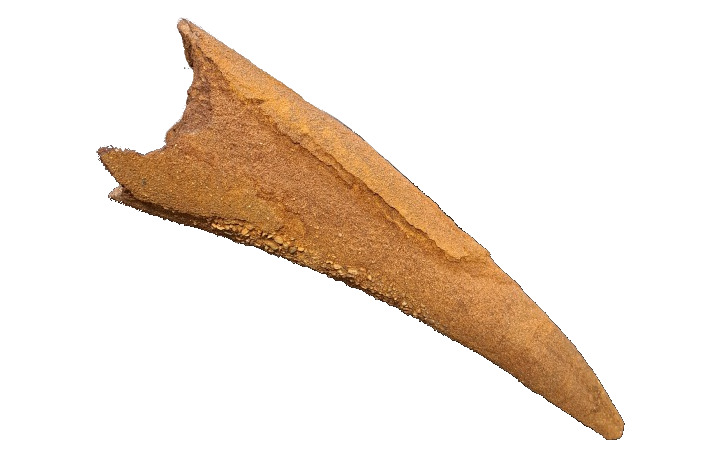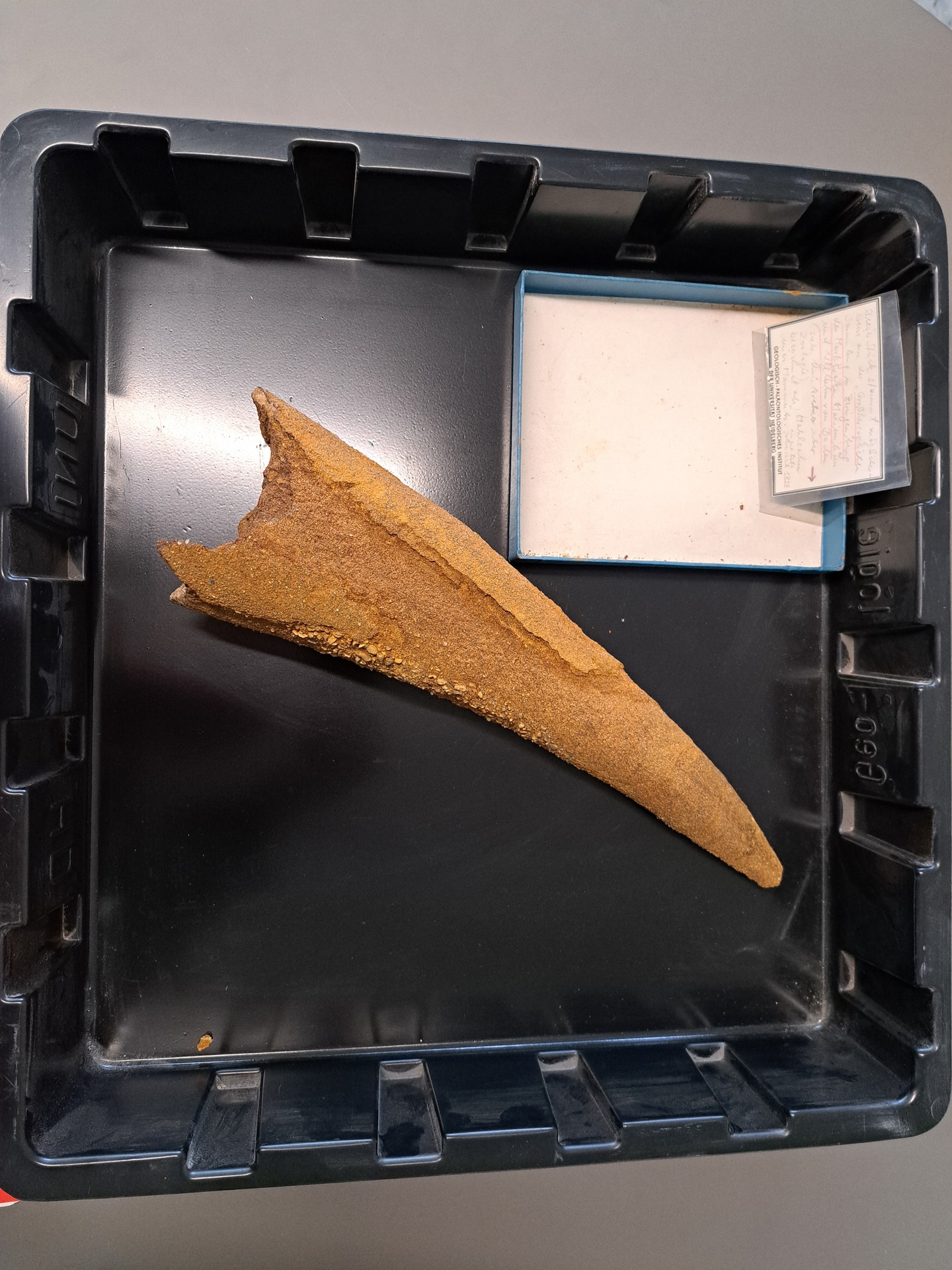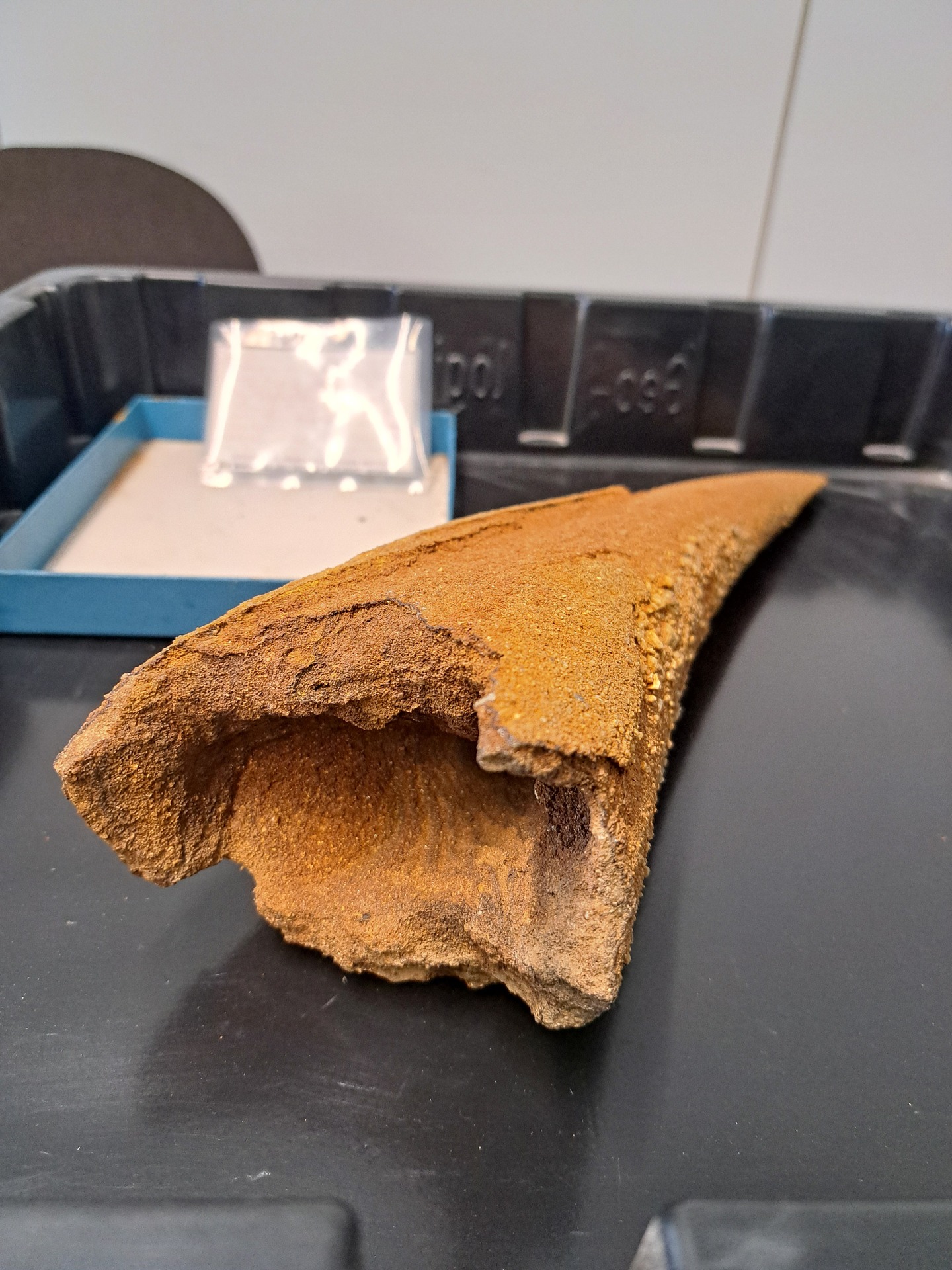Fragment of Mammoth Tusk from the Neckar Basin
Beschreibung
In the nineteenth century, numerous quarries were opened along the Neckar basin and the river was increasingly canalized. In this process, miners, engineers and curious residents came across fossilized remains of animals from a bygone past. Among these remains were the bones and teeth of a huge mammal: the mammoth. In 1796, George Cuvier distinguished the mammoth from the still existing elephants and postulated that the mammoth belongs in fact to an extinct species. The theory of extinction remained highly controversial at the time and the remains of the ELEPHAS PRIMIGENIUS, as Johann Friedrich Blumenbach baptized the mammal, became much sought-after specimens and exhibits in cabinets, museums and university collections.
Thus, the mammoth bones, teeth and tusks from the Neckar basin also found their way into private collections and cabinets. Later, some of these remains were donated or sold to the zoological collection of the University of Heidelberg. Today, the remaining objects are part of the collections of the Institute for Earth Sciences. Particularly due to institutional changes it is difficult to reconstruct the trajectory of the individual objects in their entirety. For example, the information on the mammoth tusk (Fig. 1, see gallery) shown here is contradictory. According to the accompanying file (Fig. 2), the tusk came into the collection in 1834. However, there is no corresponding reference in the records of the university archives. Instead, a document (Fig. 3) from 1823 mentions the possible receipt of a mammoth tusk. Some years later, in 1848, the documents (Fig. 4) mention again the finding of a mammoth not far from the university and a request for financial resources to commence a larger excavation.
It remains an open task to reassemble the historical records and the remaining objects to shed light on the history of the university collections and the trajectories of the various objects.
Thus, the mammoth bones, teeth and tusks from the Neckar basin also found their way into private collections and cabinets. Later, some of these remains were donated or sold to the zoological collection of the University of Heidelberg. Today, the remaining objects are part of the collections of the Institute for Earth Sciences. Particularly due to institutional changes it is difficult to reconstruct the trajectory of the individual objects in their entirety. For example, the information on the mammoth tusk (Fig. 1, see gallery) shown here is contradictory. According to the accompanying file (Fig. 2), the tusk came into the collection in 1834. However, there is no corresponding reference in the records of the university archives. Instead, a document (Fig. 3) from 1823 mentions the possible receipt of a mammoth tusk. Some years later, in 1848, the documents (Fig. 4) mention again the finding of a mammoth not far from the university and a request for financial resources to commence a larger excavation.
It remains an open task to reassemble the historical records and the remaining objects to shed light on the history of the university collections and the trajectories of the various objects.
Kurzbeschreibung
In the nineteenth century, numerous quarries were opened along the Neckar basin and the river was increasingly canalized. In this process, miners, engineers and curious residents came across fossilized remains of animals from a bygone past. Among these remains were the bones and teeth of a huge mammal: the mammoth.
Typ
Fragment from mammoth tusk
Thema
megafauna, mammoth, paleontology, extinction, university collection
Beteiligte Personen und Organisationen
Object was assumingly part of the cabinet of Maximilian and Wilhelm of Baden in Zwingenberg. In 1834 it entered university collection in what was then the zoological collection. The trajectory of the object is in several ways characteristic for the university collection in Heidelberg: many of its objects came from regional cabinets; many objects were collected during the 19th century when the Neckar valley underwent significant transformations. In the 20th century the collections were reassembled in different institutes which makes it often difficult to reconstruct and tell their stories.
Zeit
1823
Ort
Ladenburg (?)
Material/Technik
Stone/bone
Förderung
Project: SciCoMove - Scientific Collections on the Move: Provincial Museums, Archives and Collecting Practices (1800-1950).
Funding: This project has received funding from the European Union’s Horizon 2020 research and innovation programme under the Marie Skłodowska-Curie grant agreement No 101007579.
The contents of this publication are the sole responsibility of the SciCoMove consortium and do not necessarily reflect the opinion of the European Union.
Funding: This project has received funding from the European Union’s Horizon 2020 research and innovation programme under the Marie Skłodowska-Curie grant agreement No 101007579.
The contents of this publication are the sole responsibility of the SciCoMove consortium and do not necessarily reflect the opinion of the European Union.
Dateien



Quellenangabe
„Fragment of Mammoth Tusk from the Neckar Basin,” SciCoMove, zuletzt aufgerufen am 1. Juli 2025, https://ausstellungen.deutsche-digitale-bibliothek.de/scicomove/items/show/13.
